DAVENPORT
IAN DAVENPORT LAKE

In recent years, British painter Ian Davenport has worked on an increasingly ambitious scale: in 2017 he was invited to make a 14-metre long painting for the Giardini at the Venice Biennale [pp.7, 58–59], while 2022 saw the opening of a site-specific installation on the steps of the Chiostro del Bramante in Rome [p.2], part of an exhibition curated by Danilo Eccher. This year, Davenport has installed Tide on the Greenwich Peninsula, London, while this exhibition at Waddington Custot, ‘Lake’, includes his largest ever wall to floor installations.
In the exhibition, two immense paintings – one at the entrance of the space and the other in the heart of the gallery – feature lines of poured paint that flow down the length of the wall into a pool of colour that extends to six-metres across the floor. Of this ambitious new work, which was developed over several months in Davenport’s studio in Peckham, South East London, the artist says: “Working on a large scale, flooding the gallery with colour, brings out certain themes in painting that interest me. I can allow the paint to behave more like a sculptural entity: it is manipulated by me but also by gravity, and the work has a pronounced relationship to the floor, much like a sculpture”.
The use of unconventional methods to apply paint is central to Davenport’s practice. Spanning a career of over three decades, his paintings have been created with syringes and watering cans, or with paint poured directly from its tin. In this exhibition, Davenport’s recent paintings of poured lines reveal a greater sense of symmetry, and a technique whereby the pooled paint is pushed back on itself, creating a new optical effect that evokes a tide of colour. Whilst retaining his original sense of calculated rhythm, the overall effect is now one of mirroring. The colours are selected instinctively, inspired by sources as diverse as medieval stained glass, the Caravaggios in Rome at the Palazzo Borghese and Santa Maria Del Popolo Church, paintings by Renaissance master Perugino and Saturday morning cartoons like Scooby-Doo.
‘Lake’ marks Davenport’s tenth show with the gallery, beginning with a debut in 1990 after his graduation from Goldsmiths as part of the YBA generation. The exhibition coincides with an important overview of Davenport’s works on paper, on view at The Burton at Bideford, in Devon, until 3 November 2023.
3
Introduction
Left: Poured Staircase , Chiostro Del Bramante, Rome, 2022
In conversation
Ian and Philip Davenport

Ian: Seen in tandem with the paintings, they show a richer depth of enquiry, riskier too. As paper was relatively cheap it meant I could try things quickly, react spontaneously with ideas as they came. At Goldsmiths we were encouraged to find and trust our own language, especially by Michael Craig-Martin, who was our tutor but also became our ambassador.
Philip: The darkest paintings in this current exhibition gave me a gut punch. I thought of Caravaggio, and he, or at least his colour palette, turns out to be your source of inspiration. You made these pieces alone in the studio at a time when Covid hit?

Philip Davenport: We’ve often talked about when we were children, playing with paints and pens at the kitchen table while mum cooked. She created a little haven, which we’ve both dipped into as adults, me with poems and you with paintings.
Ian Davenport: At that table we became very comfortable with who we were, learning our potential by playing. Even then, I was experimenting with paints and glue.
When I was at Goldsmiths, I moved to the Sculpture Department in my final year. I wanted to be with sculptors because of the way they explored materials. It was something I was drawn towards intuitively. Gradually I learned that working with a very liquid paint, pouring it and allowing gravity to interact, it starts to behave like a sculptural entity. This was a turning point, realising that my practice could be between painting and sculpture.
Philip: A huge group of 600 of your old works on paper recently came to light and now a selection will be exhibited at the Burton Museum in Devon. To me, they offer an alternative reading of what you’re about, the primary impulse. How do they speak to you now?
Ian: They’ve revealed how close I still am to that young artist, the playfulness and the questioning… Many pieces I thought were lost, some I’d forgotten and others were too damaged to exhibit.
Ian: Yes, I’d been to Rome just before Covid to do a site visit and I took the opportunity to see the Caravaggios, such as Saint Jerome Writing (1605–1606) [below] in the Palazzo Borghese and others in Santa Maria Del Popolo Church. Appropriating colours from historic paintings brings colour decisions I might not normally make, with the bonus of a ghost artist in the conversation. I liked pickpocketing Caravaggio and, by all accounts, he appreciated a thief! His use of chiaroscuro was adopted by his contemporaries who were sometimes known as ‘Shadowists’, so I guess I’m a Late Shadowist.
Back home, I was alone in the studio during lockdown — it was quite eerie, potent even, and I found myself mulling over this trip. How would Caravaggio’s darker palette speak to this time? I let the atmosphere of the pandemic spread into my work. Looking at my paintings Inside Out [p.26] and Outside In [p.33], you can see the black and red bleed into each other.
Philip: They feel fragile but full of adventure too. Do you think that there’s a different kind of coherence to your works, now these sketches and experiments are back in the story?

Rise [p.14] has a light section in the middle of the painting which fades to darkness at the edge. There’s a drama taking place, though muted by the shadows themselves.
Philip: I didn’t see your paintings at the time, but I remember, during Covid, speaking to you over the phone one night, your distress coming down the line. Covid tripped all of us up at one point or another. And that vertiginous feeling is in these paintings. The way the colours fall away or leap out against the blacks.
Ian: The compositions were divided in the centre vertically, with a colour sequence exactly mirroring the right and left halves. As governments around the world began their lockdowns, the mirroring and reflection seemed appropriate,
given so many of us were isolated with time to reflect and in some cases go down holes of fear, or paranoia. Maybe Covid was a dark mirror, but that symmetry also gives me a sense of being centred. I guess I was trying to balance myself while ‘normal’ was breaking down. My work is a kind of abstract diary and if I’m feeling sadness, or joy, it will be there, whether I intend it or not.
Philip: Alongside the conversation with Caravaggio, several works are inspired by Perugino, another Renaissance master...
Ian: They’re in response to a painting called The Marriage of the Virgin (1500–1504) [below left] and they’re the opposite viewpoint to Caravaggio’s. They bring a radiant light. The subject of Perugino’s painting is a priest marrying Mary and Joseph, the placing of a ring on her finger. There’s a strong symmetry to the composition, in the arches and domes in the background, drawing your eye to the central action. Of course Caravaggio famously painted the moment of a ring being stolen from a lady’s finger, but it’s the way the light replies to Caravaggio’s light that really interests me.

Philip: Alongside the poured works are the newer splatter paintings, which reminded me that Leslie Waddington, curiously, always called your artworks ‘pictures’. Those splatter pieces really do have a 3D quality, they’re an optical illusion, like still life, or a landscape — you could almost walk through them — but they’re also very wild compositions. How do you know when the picture is finished?
Ian: The splatter paintings can happen over a long period, it’s sometimes weeks until I sense the conclusion coming. And then quite suddenly they’re complete. It’s difficult to spot, so I need to really be alert to that moment.
They’re a strong counterpoint to the poured lines. There’s ricochets and splinters of colour. The paint hits the paper, becoming a firework display, the marks are so dynamic and active, they keep dancing in your eyes. The initial idea came from watching the kids in a workshop I was running, they were so enthusiastic, paint was getting thrown all over the place. Their mischievousness was my springboard to these paintings and I’ve tried to hold onto that amazing vitality.
Philip: You’ve described the flow of paint as mimetic of gravity,
the primal processes that govern our world, often unnoted, they’re almost too big to comment on.
Ian: I’m drawn to certain fundamental facts of our environment. It’s not just observation of nature, rather it’s about accessing the forces of nature, the world’s pull on our bodies. Not only gravity, but wind, water, tides. I’ve used electric fans to make threads of paint skim across the paper on airborne currents. The floor sections of my Lake paintings let the columns of paint suddenly dissolve and flow like lava or water.
again. They’re like tectonic plates, sliding in accordance with the forces that shape us which are hidden because they run so deep. Let’s not forget that we are made of liquid, with paint being one of the primary metaphors for ourselves. Whatever we paint, it’s the material itself that also speaks — I want us to listen to it. Allow structures to occur, but also allow breakdowns and recognise something just happened. Often, it’s even bigger than the thing you intended.
Philip: Does this exhibition mark a wider moment of change for you as an artist? You’re moving into the wider world with your installations. You’ve been running hundreds of gallons of paint down staircases in the last couple of years. Then a whole body of disappeared works has come recently to light. To my eyes, the pieces in this show are enacting a pivotal moment. They’re split between the precision of the stripes that you’re known for and the unpredictability of the erupting paint flow, finding chaos in the order. More subtly in the Lake paintings, the colour sequences include sections which are like passing chords in music, or pauses, again it’s the moment of transition...
Ian: Change is at the core of my paintings, that’s why a split second decision can make or destroy them. I let myself sense and feel the way forward, slowing the looking process and really looking, thinking about the way the colours and shapes collide or divide from each other. Everyone should be concerned how, as humans, we see and affect one another and our ever-changing world. My approach comes from being alive to something so fundamental that I can’t ever quite explain it. Explanations come afterwards, but they’re only words and I’d rather make a painting.
Speaking of Leslie, another thing he used to say was that I was stubborn, I’d pursue an idea right through to the end. I would explain it slightly differently — I don’t force change to happen in my work, it moves forward naturally and I follow. And even though the paintings are sort of mad, there’s a strangely logical progression in how they’ve arrived.
The two new Lake paintings are the biggest departures, they’re a synthesis of the site-specific work, Giardini Colourfall , I made at Venice in 2017 [right, pp.58–59] and my Poured Staircase at Chiostro Del Bramante in 2022 [p.2]. The Lakes represent years of studio work, of getting lost and then finding a clue
Philip Davenport is a poet who often works collaboratively, constructing large multi-author narratives that address social justice. House Without Walls ( 2016–18) was made with refugee children in Berlin. Refuge from the Ravens was a complete rewrite of Wordsworth’s Lyrical Ballads authored with over 100 people in North West England affected by homelessness, and exhibited at the Houses of Parliament in 2023 (a Zwiebelfish project, which Philip co-directed).
 Giardini Colourfall , 57th Venice Biennale, 2017
Giardini Colourfall , 57th Venice Biennale, 2017
8
Mirrored Light Blue Study (after Perugino) , 2023, acrylic on aluminium panel, 101.6 x 101.6 cm [detail overleaf]


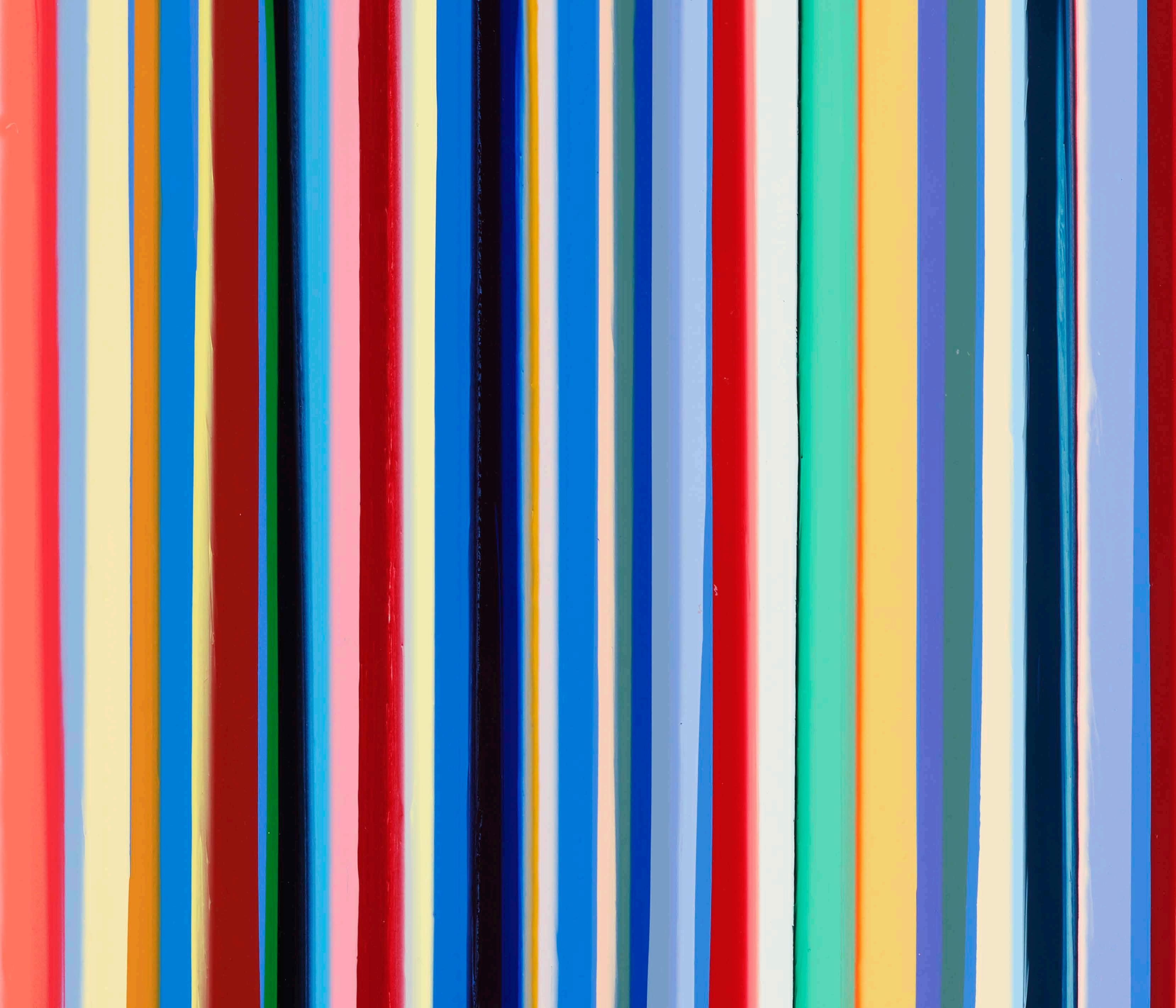
12
Blue Perugino Study, 2023, acrylic on aluminium panel, 103 x 80 cm

14
Rise , 2021, acrylic on aluminium panel, 162.7 x 132.3 cm [detail overleaf]



18
Shuffle , 2022, acrylic on aluminium panel, 60 x 50 cm

20
Mirrored Blue Light No.1 (after Perugino) , 2023, acrylic on aluminium panels (with additional floor sections), 250 x 150 cm
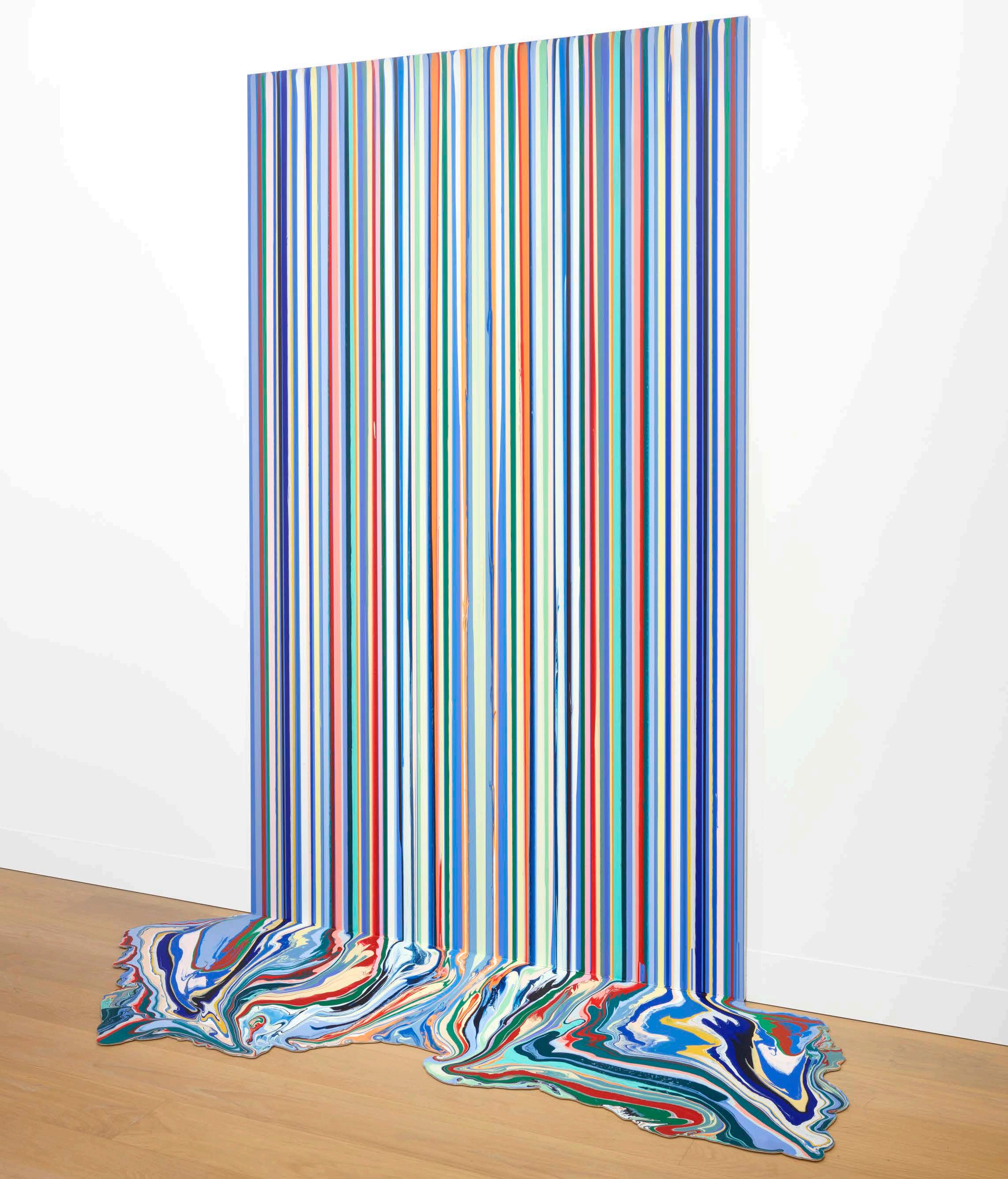
22
Mirrored Blue Light No.2 (after Perugino) , 2023, acrylic on aluminium panels (with additional floor sections), 250 x 150 cm

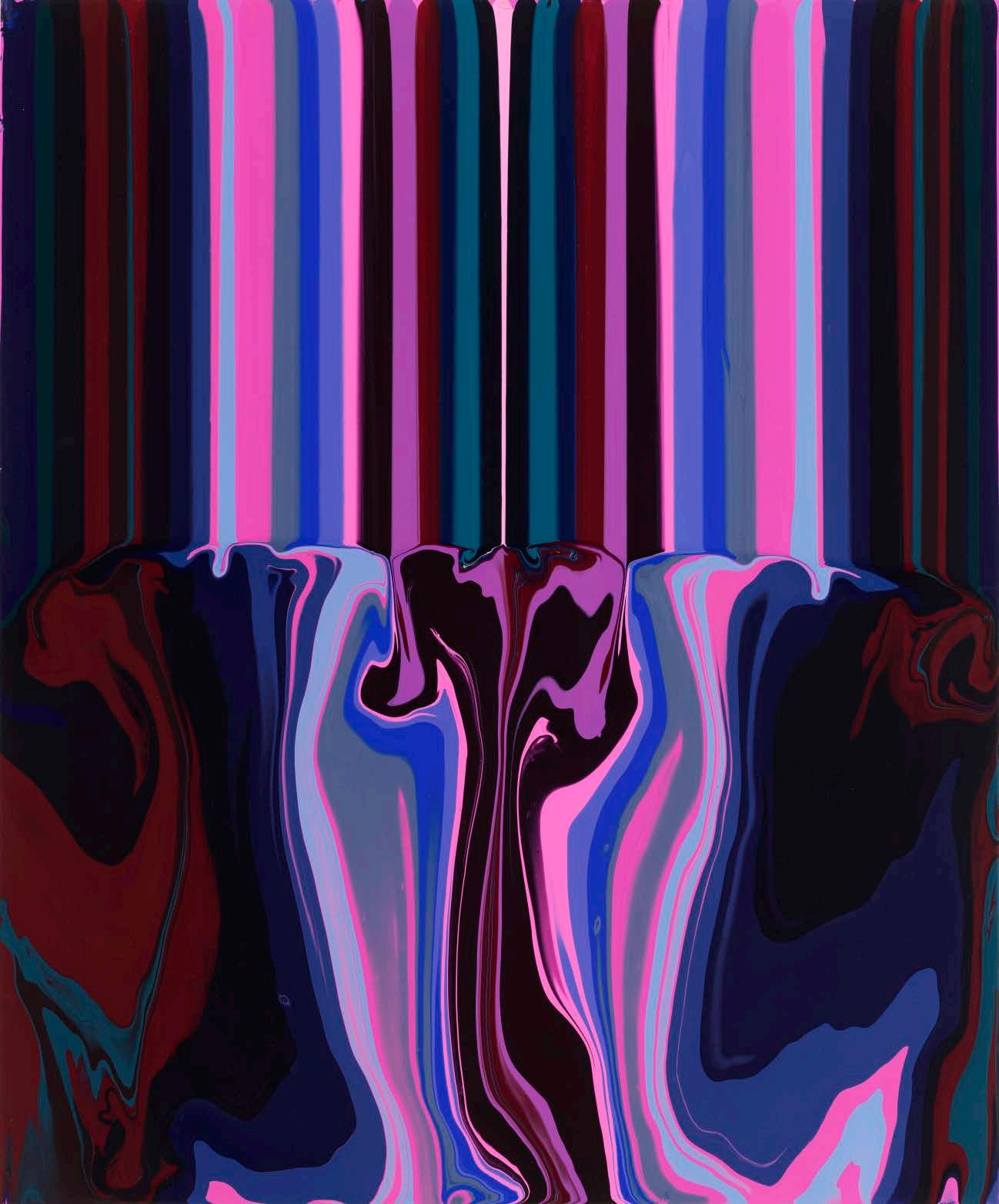
24
Do Dah , 2022, acrylic on aluminium panel, 60 x 50 cm

25
Mirrored Napthalo Crimson , 2023, acrylic on aluminium panel, 60 x 50 cm
Inside Out , 2020,
132.3
26
acrylic on aluminium panel, 162.7 x
cm
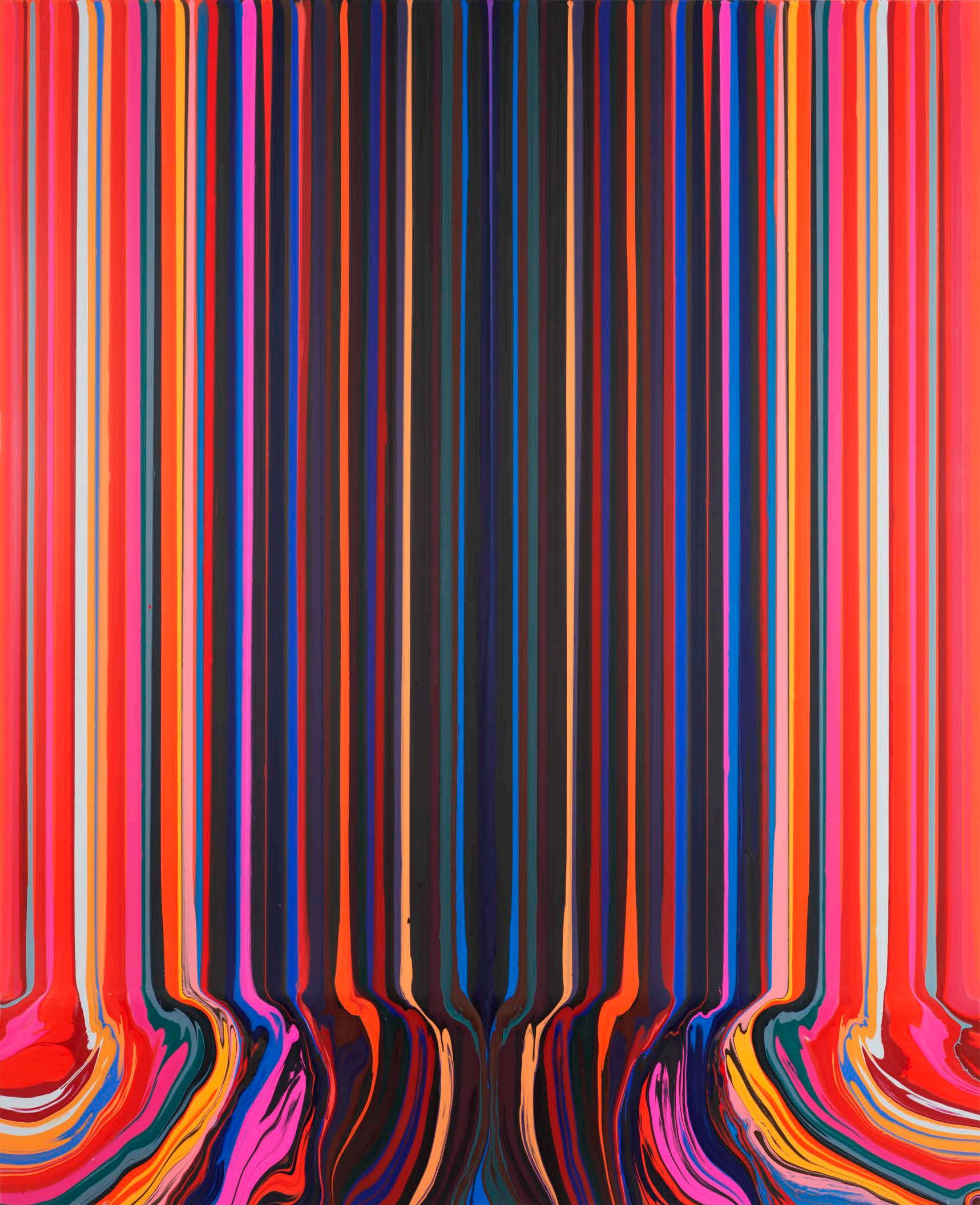
 Lake No.1 (Tide) , 2023, acrylic on aluminium panels (with additional floor sections), 280 x 592 x 447 cm [detail overleaf]
Lake No.1 (Tide) , 2023, acrylic on aluminium panels (with additional floor sections), 280 x 592 x 447 cm [detail overleaf]
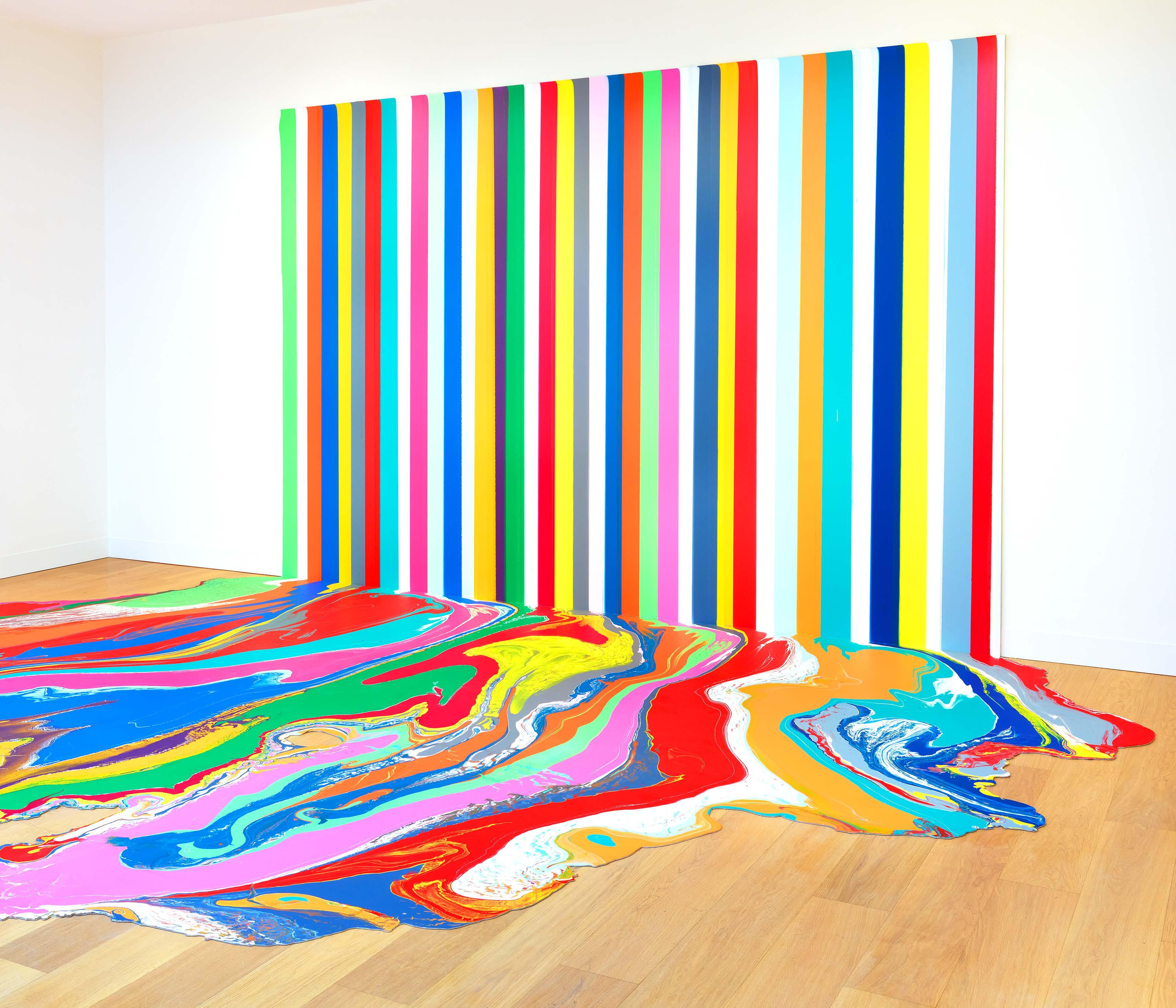



32
Mirrored Blue (after Perugino) , 2022, acrylic on aluminium panel, 60 x 50 cm

Outside In , 2021, acrylic on aluminium panel, 60 x 50 cm 33
Trace , 2022, acrylic on aluminium
162.6 x 132.3 cm 34
panel,
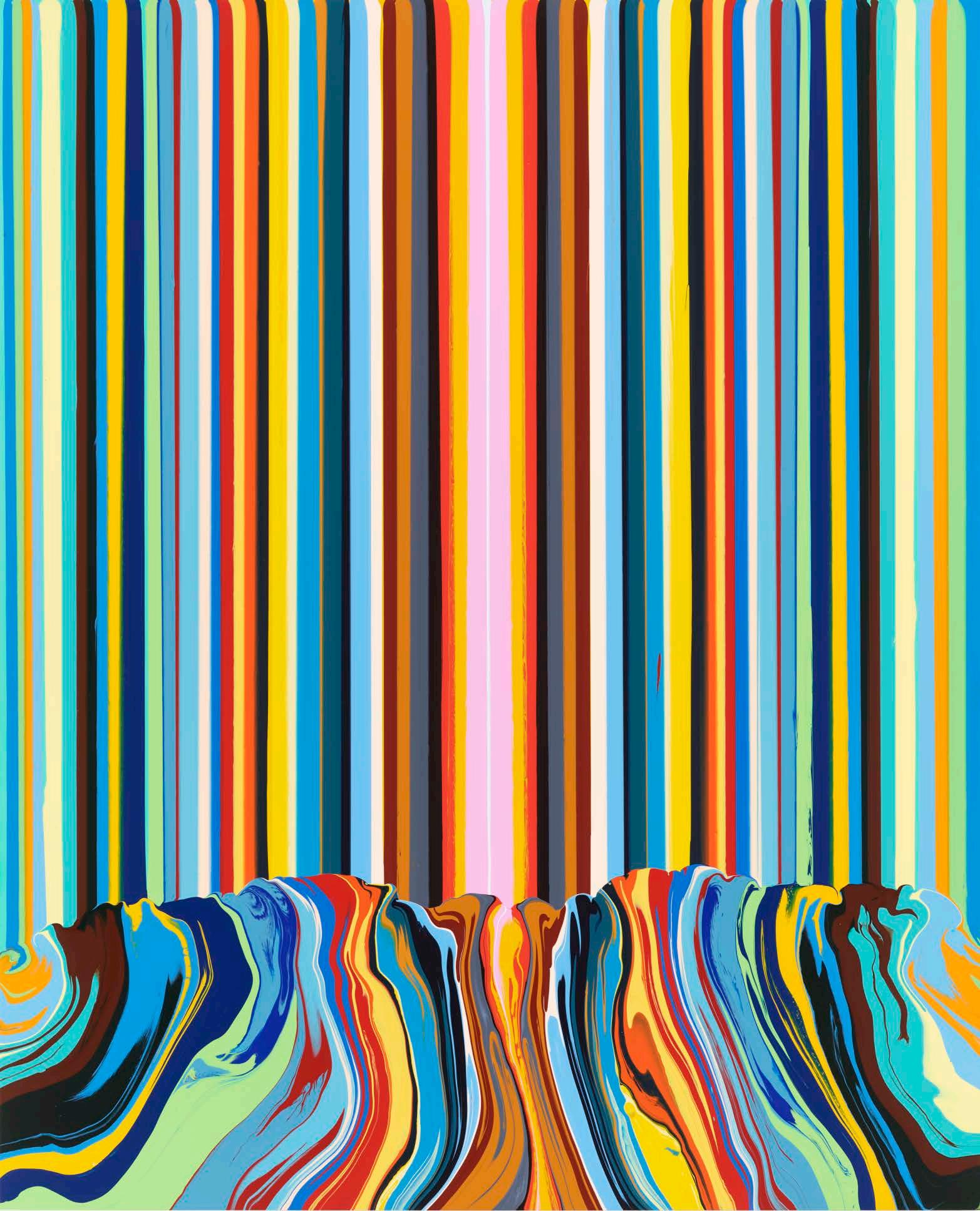
36
Mirrored Amaranth , 2022, acrylic on aluminium panels (with additional floor sections), 300 x 200 cm [detail overleaf]
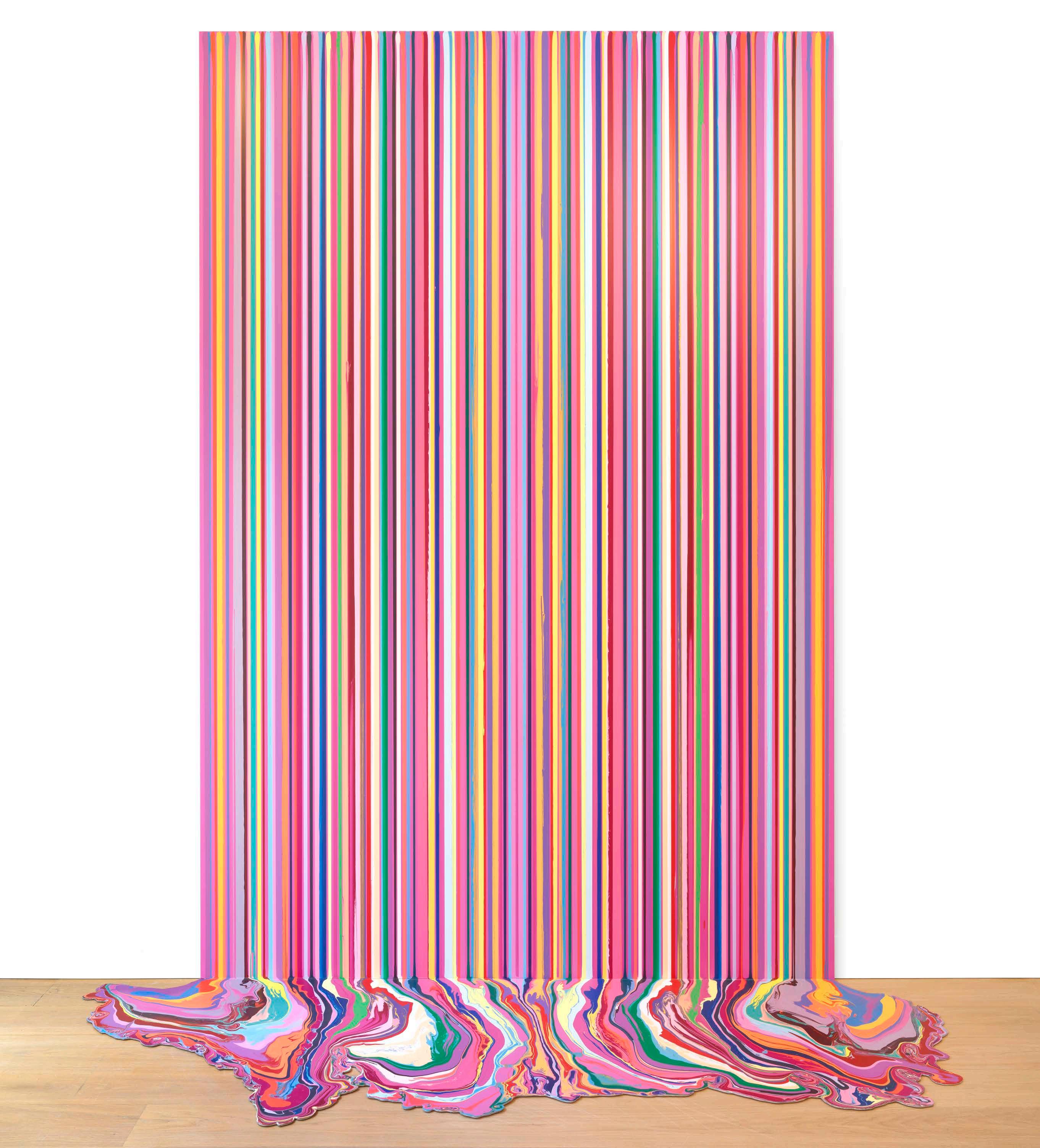

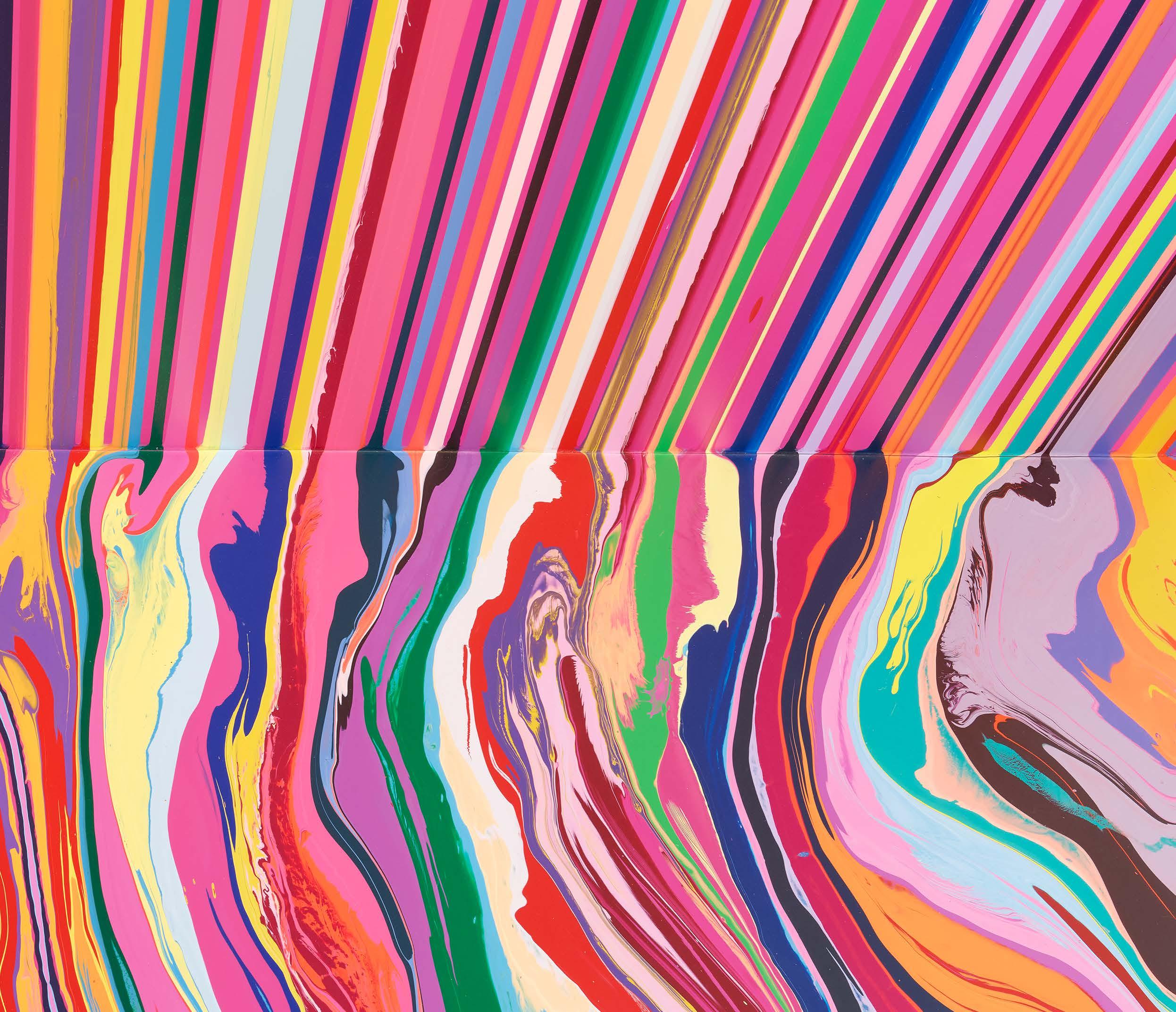
 Lake No.2 (Tectonic) , 2023, acrylic on aluminium panels (with additional floor sections), 280 x 580 x 405 cm [detail overleaf]
Lake No.2 (Tectonic) , 2023, acrylic on aluminium panels (with additional floor sections), 280 x 580 x 405 cm [detail overleaf]


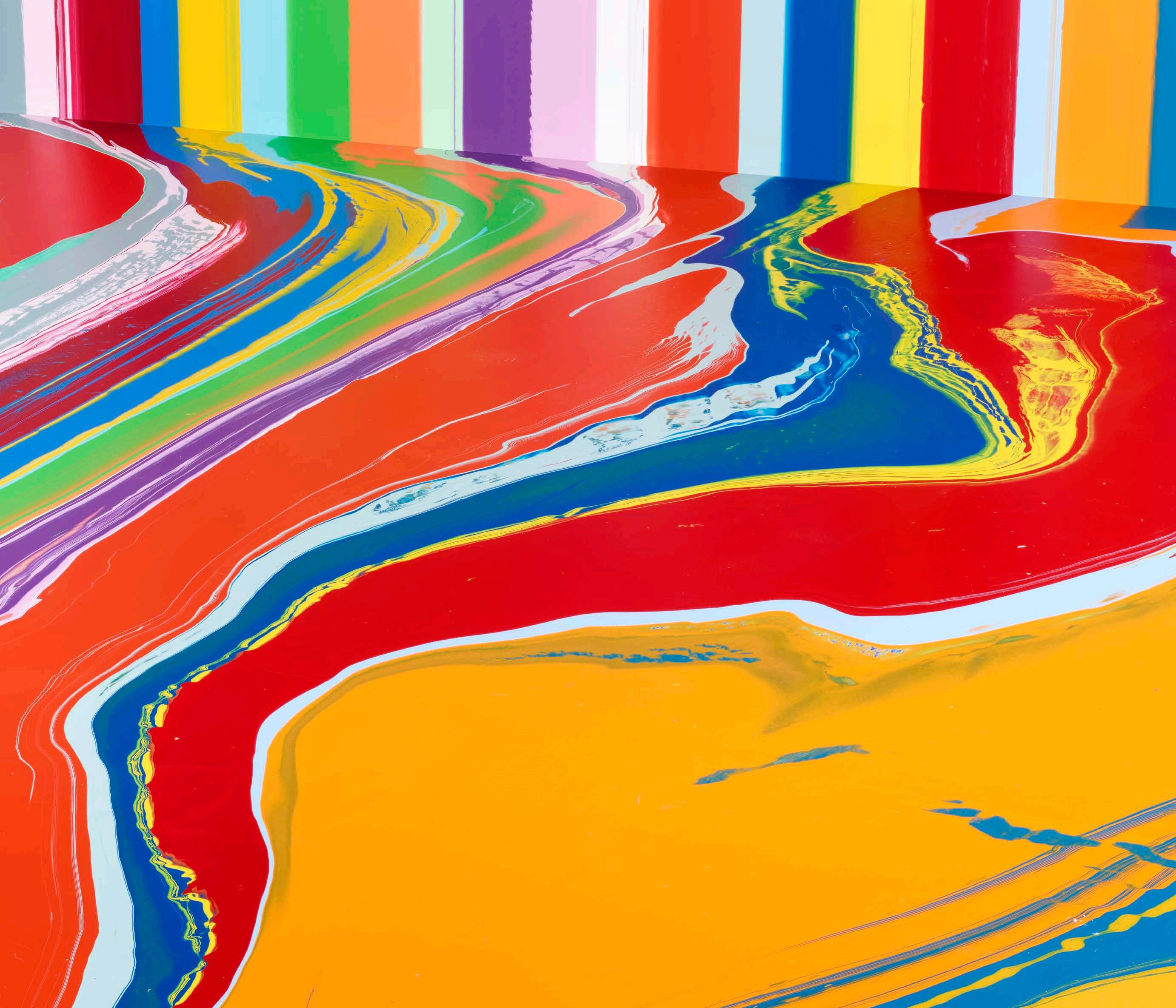
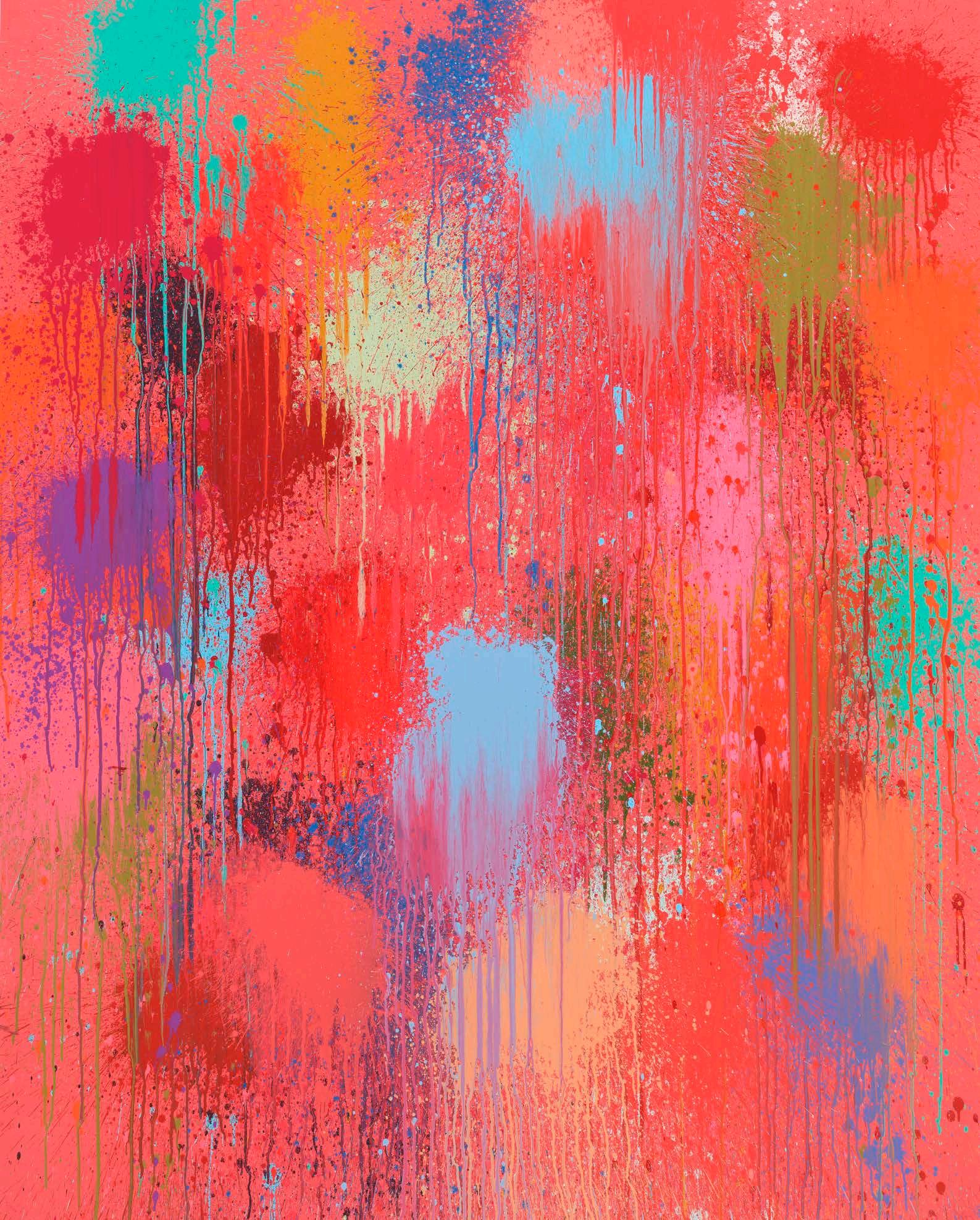
46
Red Fizz , 2022, acrylic on paper, 185 x 145 cm

47
White Stars , 2022, acrylic on paper, 185 x 145 cm [detail overleaf]


50
Black Powder, 2023, acrylic on canvas, 180 x 150 cm


Solo exhibitions
2023
‘Lake’, Waddington Custot, London
‘Works on Paper’, Burton at Bideford, Devon
‘Signal’, Custot Gallery, Dubai
2022
‘Mirrors’, Luca Tommasi, Milan
‘Mirrors and Lights’, Galerie Andres Thalmann, Zurich
2021
‘Colour Explosion’, Haas & Gschwandtner, Salzburg
2020
‘Chromatic’, Cristea Roberts, London
‘NEW WORK: Ian Davenport’, Waddington Custot, London
‘Sequence’, Kasmin Gallery, New York
2019
‘Synesthesia’, Luca Tommasi, Milan
2018
‘Horizons’, Dallas Contemporary, Texas
‘Colourscapes’, Waddington Custot, London
2017
‘Cascade’, Custot Gallery, Dubai
‘Melismatic’, Alan Cristea Gallery, London
2016
‘Cadence’, Galerie Andres Thalmann, Zurich
‘Doubletake’, Kasmin Gallery, New York
2015
Dan Galeria, São Paulo
Galerie Flore, Brussels
‘Melismatic’, Galerie Xippas, Geneva
2014
‘Colourfall’, Waddington Custot, London
2013
‘Colorfall’, Kasmin Gallery, New York
2012
‘Between the Lines’, Art Plural Gallery, Singapore
Galerie Andres Thalmann, Zurich
‘Reflex’, Giacomo Guidi Arte Contemporanea, Rome
2011
PAD, Jardin des Tuileries, Galerie Hopkins, Paris
‘Quick Slow Quick Quick Slow’, Waddington Custot, London
‘Prismatic’, Alan Cristea Gallery, London
2010
AllerArt Bludenz, Austria
2009
‘Fabstraction’, Alan Cristea Gallery, London Paul Kasmin Gallery, New York
‘Puddle Paintings’, Waddington Galleries, London
2008
‘Poured Lines’, Waddington Galleries, London Gallery Hakgojae, Seoul, Korea
‘Ian Davenport & The Simpsons’, Ingleby Gallery, Edinburgh
2006
‘Ovals Arches Lines’, Alan Cristea Gallery, London
2005
Galerie Slewe, Amsterdam
Galerie Xippas, Paris
2004
‘Ian Davenport’, Ikon Gallery, Birmingham
2003
‘Ian Davenport’, Waddington Galleries, London Ingleby Gallery, Edinburgh
2001
‘Ian Davenport’, The Box Associati, Turin Galerie Xippas, Paris
Galerie Slewe, Amsterdam
2000
‘Ian Davenport’, Waddington Galleries, London
‘Ian Davenport’, Tate Liverpool
1999
‘Ian Davenport’, Dundee Contemporary Arts, Scotland
Patrick De Brock Gallery, Knokke, Belgium
1998
‘Ian Davenport’, Galerie Xippas, Paris
1997
Galerie Limmer, Cologne
Galleria Moncada, Rome
1996
‘Statements’, Art Basel 27, Waddington Galleries, Basel Ridinghouse Editions, London
‘Ian Davenport’, Waddington Galleries, London
1994
‘Ian Davenport’, Turner Byrne Gallery, Dallas, Texas
1993
‘Ian Davenport’, Waddington Galleries, London
1992
Galerie Ludwig, Krefeld, Germany
Galerie Michael Haas, Berlin
Galerie Limmer, Freiburg, Germany
‘Ian Davenport’, Paul Kasmin Gallery, New York
1990
‘Ian Davenport’, Waddington Galleries, London
Left: Sprinkle , 2023, acrylic on aluminium panel, 60 x 50 cm [detail]
Selected group exhibitions
2022
‘Crazy’, Chiostro Del Bramante, Rome
2020
‘Momentum’, Museum Voorlinden, Netherlands ‘Colour in Motion’, Addenbrooke’s Hospital, Cambridge
2019
‘The Interaction of Colour’, Cristea Roberts, London ‘Summer Exhibition’, Royal Academy of Arts, London
2018
‘Scorribanda’, Galleria Nazionale Arte Moderna, Rome
‘Line, Form and Colour – Works from the Berardo Collection’, Museu Coleçao Berardo, Lisbon
2017
‘The World Meets Here’, Custot Gallery, Dubai ‘Colour Is’, Waddington Custot, London
2016
‘Seeing Round Corners’, Turner Contemporary, Margate
‘Pool’, The Studio Building, London
2014
‘Summer Exhibition’, Royal Academy of Arts, London
2013
‘Hidden in Plain Sight: British Abstract Art from the Collection’, Plymouth City Museum and Art Gallery ‘Summer Exhibition’, Royal Academy of Arts, London
2011
‘I Promise to Love You: Caldic Collection’, Kunsthal Rotterdam
‘Summer Exhibition’, Royal Academy of Arts, London
2010
‘John Moores 2010’, Walker Art Gallery, Liverpool
‘The Future Demands Your Participation: Contemporary Art from the British Council Collection’, Minsheng Art Museum, Shanghai
‘Pictures on Pictures: Discursive Painting from Albers to Zobernig from the Daimler Art Collection’, Museum Moderner Kunst Stiftung Ludwig, Vienna; touring to Derek Jarman Building, University of Kent, Canterbury
‘John Moores Prize Paintings in Korea’, Seongnam Art
Centre, Korea
‘Summer Exhibition’, Royal Academy of Arts, London
‘CREAM (Damien Hirst & Contemporaries)’, KIASMA, Museum of Contemporary Art, Helsinki
‘FAST FORWARD British Contemporary Art in Brazil’, Espaço David Ford – Brazilian British Centre Galleries, Pinheiros, Brazil
2008
‘Summer Exhibition’, Royal Academy of Arts, London
‘New Contemporary Displays’, Tate Britain, London
‘Cover Versions’, Ermenegildo Zegna, Milan (organised by Wallpaper* magazine)
2008–06
‘Drawing Breath’, The Jerwood Drawing Prize, Wimbledon College of Art, London
2007
‘Painting in the Noughties’, Regional Cultural Arts
Centre, Letterkenny, County Donegal, Ireland
‘The Jerwood Drawing Prize 2007’, Jerwood Space, London
‘Turner Prize: A Retrospective 1984–2006’, Tate Britain, London
‘Summer Exhibition’, Royal Academy of Arts, London
2007–06
‘You’ll Never Know: Drawing and Random Interference’ (Hayward Gallery touring exhibition), Harris Museum and Art Gallery, Preston; touring to Glynn Vivian Art Gallery, Swansea; Lowry, Salford; New Art Gallery, Walsall; Tullie House Museum, Carlisle
2006
‘Passion for Paint’, National Gallery, London; touring to Bristol City Museum & Art Gallery, Bristol; Laing Art Gallery, Newcastle
‘Artists + Alchemists’, Sherborne House, Dorset
‘How to Improve the World: British Art 1946–2006’, ‘Arts Council Collection Exhibition’, Hayward Gallery, London
‘Abstract Painting and the University of Warwick Art Collection’, Mead Gallery, Warwick Arts Centre, Warwick
‘Summer Exhibition’, Royal Academy of Arts, London
‘The hardest thing to draw is a kiss’, Wimbledon School of Art, London
2005
‘Minimalism and After IV’, Daimler-Chrysler
Contemporary, Berlin
‘Elements of Abstraction’, Southampton City Art Gallery
2004
‘Painting as Process: Re-evaluating Painting’, Earl Lu Gallery, LASALLE-SIA College of the Arts, Singapore
‘Other Times: Contemporary British Art’, City Gallery, Prague (in association with the British Council)
‘John Moores 23’, Walker Art Gallery, Liverpool
2003
‘Days Like These: Tate Triennial of Contemporary British Art’, Tate Britain, London
‘Exodus: between promise and fulfilment’, Kettle’s Yard, Cambridge
2002
‘In the Freud Museum’, Freud Museum, London
‘Peintures – contrainte ou recette’, Galerie du Cloître, Rennes (organised by L’Ecole des Beaux-Arts, Rennes)
‘John Moores 22’, Walker Art Gallery, Liverpool (part of the Liverpool Biennial 2002)
‘Jerwood Drawing Prize’, University of Gloucestershire, Cheltenham; touring to other UK venues including Jerwood Space, London
‘Colour – A Life of Its Own’, Mücsarnok, Kunsthalle Budapest, Hungary
2001
‘Complementary Studies: Recent Abstract Painting’, Harris Museum and Art Gallery, Preston
‘Jerwood Painting Prize’, Jerwood Gallery, London; touring to Gallery of Modern Art, Glasgow
‘UBS Warburg Exhibition’, UBS Warburg at Planit Arches, London
2000
‘Surface’, An Tuireann, Isle of Skye, Scotland
‘Fact & Value’, Charlottenborg Udstillingsbygning, Copenhagen, Denmark
‘Profiles of Young European Painting’, Premio del Golfo, La Spezia, Italy
1999
‘Examining Pictures’, Whitechapel Art Gallery, London; touring to Museum of Contemporary Art, Chicago;
Armand Hammer Museum, Los Angeles
‘John Moores 21’, Walker Art Gallery, Liverpool
1998
‘Elegant Austerity’, Waddington Galleries, London
‘Up to 2000’, Southampton City Art Gallery
1998–96
‘About Vision: New British Painting in the 1990s’, Museum of Modern Art, Oxford; touring to The Fruitmarket Gallery, Edinburgh; Wolsey Art Gallery, Ipswich; Laing Art Gallery, Newcastle upon Tyne
1997
‘Treasure Island’, Calouste Gulbenkian Foundation, Lisbon
‘Ian Davenport, Michael Craig-Martin, Zebedee Jones, Michael Landy and Fiona Rae’, Waddington Galleries, London
1997–96
‘Ace! Arts Council Collection new purchases’, South Bank Centre exhibition; touring to Hatton Gallery, Newcastle upon Tyne; Harris Museum and Art Gallery, Preston; Oldham Art Gallery; Hayward Gallery, London; Ikon Gallery, Birmingham; Mappin Art Gallery, Sheffield; Angel Row Gallery, Nottingham; Ormeau Baths Gallery, Belfast; Arnolfini Gallery, Bristol
1997–92
‘New Voices: recent paintings from the British Council collection’, British Council exhibition; touring to Centre de Conferences Albert Borschette, Brussels; EEC Presidency Exhibition, Brussels; Musée National d’Histoire et d’Art, Luxembourg; Taksim Municipality Art Gallery, Istanbul; State Fine Arts Gallery, Ankara; Izfas Gallery, Izmir, Turkey; Santa Monica Contemporary Art Centre, Barcelona; Museo de Bellas Artes, Bilbao; Centro Cultural Galileo, Madrid; Veronicas: Sala de Exposiciones, Murcia, Spain; Pescaderia Vieja: Sala de Arte, Jerez, Spain; Kulthurhistorisches Museum, Magdeburg, Germany; National Theatre Galleries, Bucharest, Romania; Art Halls of the Cultural Centre of the Municipality of Athens; Cultural Centre for the National Bank of Greece, Thessaloniki; The Russian Museum, Saint Petersburg; Kremlin Museum, Nizhnii Novgorod, Russia; Mirbachov Palace, Bratislava, Slovakia; Cultural Centre for the National Bank, Thessaloniki, Greece;
The House of the Black Madonna, Czech Museum of Fine Arts, Prague; Museum of Modern Art, Skopje, Macedonia
1996
‘Nuevas Abstracciones’, Palacio de Velázquez, Museo Nacional Centro de Arte Reina Sofía, Madrid; touring to Kunsthalle Bielefeld, Germany; Museu d’Art Contemporani, Barcelona
‘50 Jahre Kunst und Museumsverein Wuppertal’, Kunsthalle Barmen, Wuppertal-Barmen, Germany
1996–95
‘Real Art – A New Modernism: British Reflexive Painters in the 1990s’, Southampton City Art Gallery; touring to Stedelijk Museum, Aalst, Belgium; Leeds Art Gallery
1995
‘From Here’, Waddington Galleries and Karsten Schubert, London
‘30 Years of Northern Young Contemporaries’, Whitworth Art Gallery, Manchester
1994
‘Here and Now’, Serpentine Gallery, London
1992
‘Dumb Painting’, Centraal Museum, Utrecht
‘Gifts to the Nation: Contemporary Art Society Purchases’, Camden Arts Centre, London
1992–91
‘Confrontaciones: Arte ultimo britanico y español’, Instituto de la Juventud, Madrid (in collaboration with the British Council)
1991
‘British Art from 1930’, Waddington Galleries, London
‘Metropolis Internationale Kunstausstellung’, MartinGropius Bau, Berlin
‘Broken English’, Serpentine Gallery, London
‘Abstraction,’ Waddington Galleries, London
‘Turner Prize’, Tate Gallery, London
‘New Displays’, Tate Gallery, London
1991–90
‘Carnet de Voyages 1’, Fondation Cartier, Jouy-enJosas, France
1990
‘The British Art Show’, McLellan Galleries, Glasgow; touring to Leeds City Art Gallery; Hayward Gallery, London
1989
‘Current’, Swansea Arts Workshop (Old Seamen’s Chapel), Swansea
‘West Norwood 1’, West Norwood Railway Arches (7, 8, 9), London
1988
‘Freeze’, Surrey Docks, London
1985
‘Young Contemporaries’, Whitworth Art Gallery, University of Manchester
55
Collections Commissions
2023
Site-specific installation Tide on the Greenwich Peninsula, London
2022
Site-specific installation Poured Staircase at the Chiostro Del Bramante in Rome, for the institution’s ‘Crazy’ exhibition
2019
Window design for Flannels department store, London
Site-specific installation Cascade for Dior’s flagship shop, Toronto
2018
Design for Estée Lauder’s Pure Color Envy
2017
Watch design, Wide Acres of Time , for Swatch
Site-specific installation Giardini Colourfall for the Swatch Pavilion, 57th Venice Biennale
2016
Façade design for Jelmoli department store, Zurich Artist plates for South London Gallery, produced with the porcelain manufacturer Meissen Bag design for Dior which launched at Art Basel Miami Beach in November 2016
2014
Site-specific installation Colourcade: HANA 2014 for the HANA Building, Singapore
2013
Commissioned by Fabergé and Vistajet, tail fin design for Vistajet’s flagship bombardier Global 6000
2012
Commissioned by the Mayor of London, mascot design for the London Olympics 2012
2010
Mural design with Maya Romanoff for Wallpaper* Magazine’s exhibition at Brioni HQ, Milan
2007
Design for an ‘environmentally friendly’ American Flag for The New York Times, published 15 April
Site-specific installation Poured Lines for the QUBE
Building, Tottenham Court Road, London
2006
Site-specific installation Poured Lines: Southwark Street for Southwark Western Bridge, London Limited edition cover design for Wallpaper* magazine’s 10th-anniversary series
2004
Site-specific installation for the Maths and Science Building, University of Warwick
1997
Site-specific installation for Banque Paribas, London
Arts Council Collection, Hayward Gallery, London
Berardo Collection Museum, Lisbon
Birmingham City Art Gallery
Borusan Art Gallery, Istanbul
British Council, London
British Museum, London
Centre Pompidou, Paris
Contemporary Art Society, London
Dallas Museum of Art, TX
Fonds National d’art contemporain, Paris
The Government Art Collection, London
Grosvenor Museum, Cheshire
Jerwood Space, London
Museum of Modern Art, La Spezia, Italy
Museum of Modern Art, New York City, NY
National Museum of Wales, Cardiff
Nuffield College, Oxford University
Paintings in Hospitals, London
Plymouth City Museum and Art Gallery
Rose Art Museum, Brandeis University, MA
Southampton City Art Gallery
Tate, London
Unilever, London
University of Kent, Canterbury Museum Voorlinden, Netherlands
Von der Heydt Museum, Wuppertal, Germany
Whitworth Art Gallery, Manchester
Overleaf: Giardini Colourfall , 57th Venice Biennale, 2017


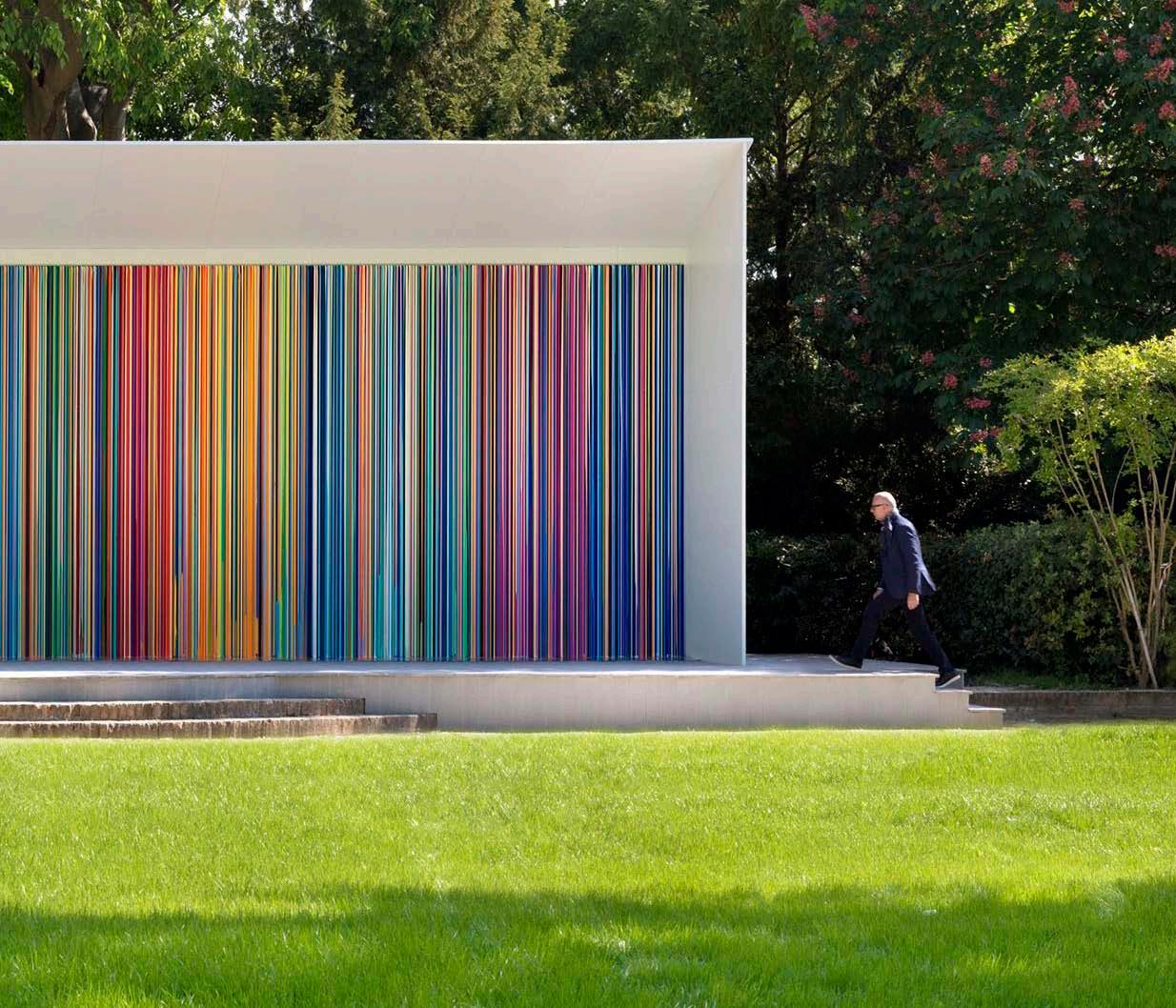
This catalogue accompanies the exhibition
IAN DAVENPORT
Lake
Waddington Custot
11 Cork Street, London
6 October–11 November 2023
Waddington Custot extends our gratitude to the talented team at the Davenport Studio for their inspiration and assistance in the preparation of this exhibition. Thank you also to the team at Prudence Cuming Associates for their skill and professionalism.
The gallery sincerely thanks Philip Davenport for his insightful and heartfelt interview with Ian, which we are privileged to publish.
Above all, our warmest thanks to Sue Arrowsmith and, of course, to our friend and creative collaborator of 35 years, Ian Davenport.
Photography: pp.7, 58–59 © Todd White; all other images by Prudence Cuming Associates / Printed and bound by: Gomer Press, Llandysul, Wales / ISBN: 978-1-7397005-1-5 / Official copyright: © Waddington Custot, London / Artworks © Ian Davenport 2023. All Rights Reserved : no part of this publication may be reproduced or transmitted in any form, electronic or mechanical, including photocopy, without prior written permission from the publishers.
60





 Giardini Colourfall , 57th Venice Biennale, 2017
Giardini Colourfall , 57th Venice Biennale, 2017













 Lake No.1 (Tide) , 2023, acrylic on aluminium panels (with additional floor sections), 280 x 592 x 447 cm [detail overleaf]
Lake No.1 (Tide) , 2023, acrylic on aluminium panels (with additional floor sections), 280 x 592 x 447 cm [detail overleaf]









 Lake No.2 (Tectonic) , 2023, acrylic on aluminium panels (with additional floor sections), 280 x 580 x 405 cm [detail overleaf]
Lake No.2 (Tectonic) , 2023, acrylic on aluminium panels (with additional floor sections), 280 x 580 x 405 cm [detail overleaf]












